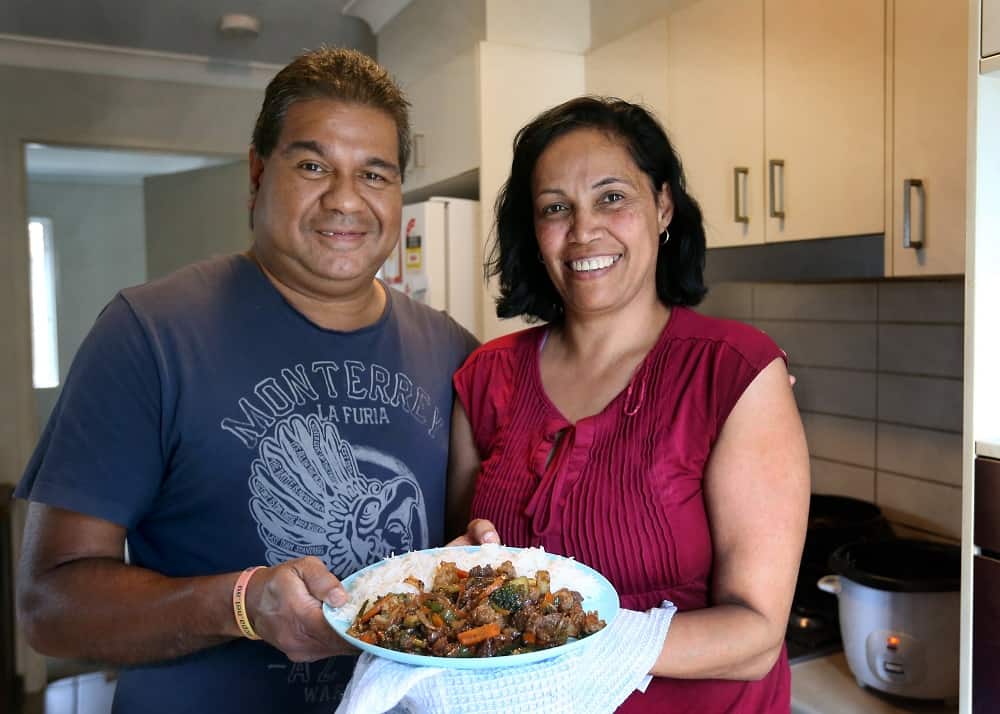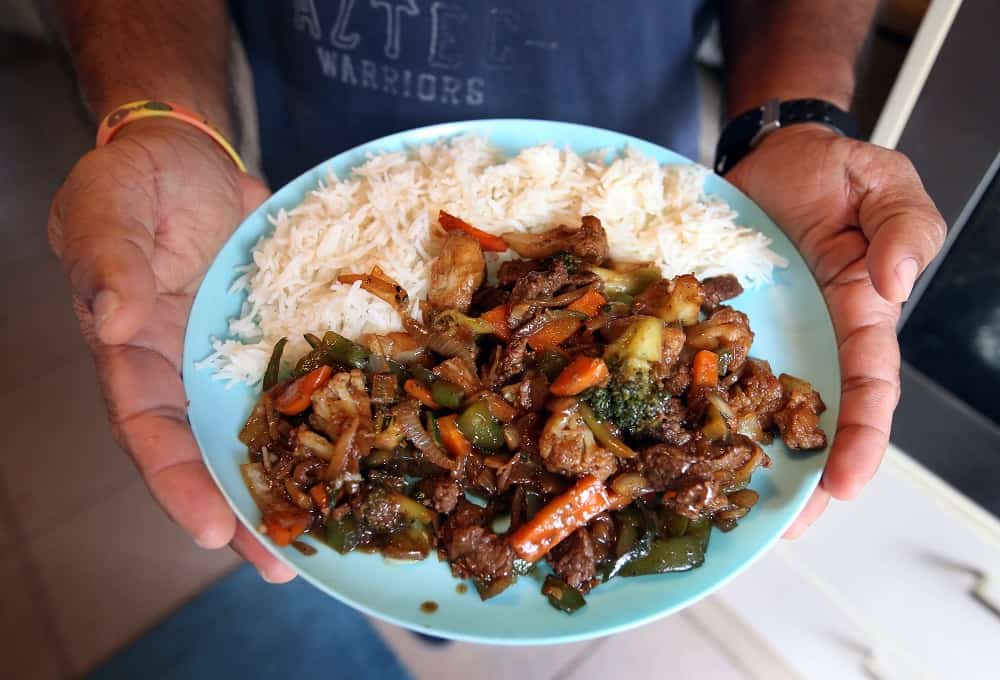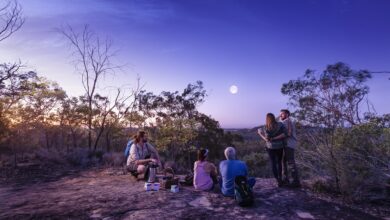
But now that her youngest, Tyrek, is 14, she has started to think about what her life might be able to look like beyond being at home full time. Two of her children are high needs and one will never leave home.
Bianca’s identity is unique and evolving. She was born in Ipswich and belongs to two tribes.
“My father is Wulli Wulli and Wakka Wakka from near Cracow, Eidsvold area and my mother is Kamilaroi and Bigambul from northern NSW,” she said.
Bianca wants her children to know their heritage, she said it is important for future generations to understand where they come from.
“A lot has got lost in translation but the children need to know where they come from. A lot of my ancestors were put in (Aboriginal mission) Cherbourg. So when I hear someone say they’re from Cherbourg I think, no you’re not’ because it’s not really where you are from if you are just put there,” she said.
“I only found out in my later years that my grandfather knew our language of the Wulli Wulli. But he never spoke it because he was living in a halfway house and was not allowed to speak it.
“Even though I don’t know my full language, I know words and phrases. When I talk sometimes my lingo just pours out of me and I find I have to pull back on my language sometimes. I just keep it in the house.”
Bianca also wants to look to the future and has her heart set on working in the fitness industry.
“I have been job hunting for two years. It can be really hard. I don’t know what I am doing wrong,” she said.
“I am volunteering, I run fitness classes but I would like to be paid to do what I love.
“I want to start earning money so I can help the family out.”
The family is looking forward to a trip back to Bianca’s husband’s traditional land area soon. Michael Bong is from the Yidinji tribe in Cairns.
“Two of my children are special needs. I want to go there and try and get some healing,” Bianca said.
An ancient Aboriginal ritual that has been performed for tens of thousands of years is a smoking ceremony.
This traditional type of medicine is important to Bianca.
“I want the kids to have this experience. A healing moment for them to embrace. Life gets very hectic so I want to settle things down and just take a moment. We have good days and bad days and this will help,” she said.
Totems
Totems are given at birth and play a significant role in Aboriginal identity giving a connection to their sacred country.
These link the land and animals with the spiritual world, and creation time and are often passed down through generations. You must not eat your totem.
This example is from a Queensland Studies Authority report explaining the rites and customs of Indigenous people: “A goanna may cross the mother’s path during her pregnancy. The child is then seen to be linked to the Goanna Dreaming or the ancestor Uudinaddalli and, as such, has a special relationship with the goanna and with the physical location where the mother saw the sign.”
Bianca’s totem is a swan. “My grandmother loved swans,” she said.
Michael’s totem from his father and tribe, is a scorpion.
“In our tribe the story is that when a boy was stung by a scorpion he would transition from being a boy into being a man. This is him becoming a warrior in his tribe and he would get his shield and spear,” he said.

“I was at my cousin’s 21st birthday party and I was standing out the front when a police car came along and pulled over a couple of kids on BMX bikes. There was an Aboriginal fella sitting in the back of the police car but he was like the police. He had a blue shirt on, no patches, and he hopped out of the car and started talking to the kids. The police just stood back and let him talk,” Michael said.
“I knew him so I asked him what he does, that is when I found out about that job and I really desperately wanted to do this job so I started applying. It took a while and it wasn’t until I applied in Brisbane that I got the job.
“I work with the Aboriginal community and health and the best thing about the job is being able to help and getting them support. I also educate the police on culture and one of my roles is to train the new police recruits when they come here to Ipswich.”
“There was an Aboriginal fella who didn’t have a good relationship with the police. He didn’t like police at all. When he first saw me he thought I was a bad person and he didn’t know about police liaisons. After I helped him out it changed his mind and he told me has respect for me now. I was able to make a difference for him and it makes me happy because he has never forgotten about me,” Michael said.
Michael remembers his mother’s cooking and how she would cook in the traditional way.
“My cousin would come around and say to my mother ‘auntie, do you want some turtle meat?’ and mum would say ‘yeah’ so he would say ‘give me an hour and a half’. He would come back with a plastic bag with the meat cut up ready in it,” he said.
“We would go out in the backyard and get some tea grass. She would gather the grass and tie it in a knot. Then mum would put it in a saucepan with the turtle meat and it was like a natural marinade. I can still remember that smell. We would eat the turtle with steamed rice.”
When Michael was young, a couple of lads came up to Cairns from Ipswich and needed somewhere to stay. One of the lads was Leichardt’s Errol Davidson.
“I went round to visit him, and I hadn’t seen him in more than 30 years. The first thing he said to me is ‘I’ve been to every Aboriginal community in Australia but your mother cooks the best turtle’,” Michael said.
Aboriginal Innovation
The didgeridoo is a musical wind instrument traditionally made from hollow trees created by termites. The instrument requires circular breathing and according to custom, can only be played by men.
Boomerang is a throwing stick that comes back. A clever Aboriginal invention, the shape and curves use aerodynamics to enable the boomerang to return.
Corroborees are Aboriginal ceremonies that involve singing and dancing.
Over thousands of years, Aboriginal people have perfected the skills to identify and prepare bush tucker. In Ipswich there is a bush tucker trail at Ipswich City Council’s Hardings Paddock.
Smoking ceremony is when native plants and leaves are burned. The smoke is then walked around to ward off bad spirits and bad omens leaving the attendees cleansed.
Another unique invention is the woomera. It is made by shaping a piece of timber into a thin handle and attaching a stone to one end. It then uses leverage to allow a spear to be thrown up to three times further.

Recipe: Kangaroo in oyster sauce with stir fried vegetables – feeds 10 people
Ingredients:
1 kg kangaroo fillet
2 onions
1 capsicum
1 head of broccoli
½ head of cauliflower
2 zucchini
2 carrot
1 tablespoon of garlic
1 tablespoon of ginger
1 tablespoon of mixed herbs
1 tablespoon of cumin powder (optional)
1 cup of oyster sauce
1 cup of soy sauce
2 tablespoons of vegetable oil
Steamed rice to serve
Method:
Marinate the thinly sliced kangaroo meat with the ginger, garlic, herbs, cumin and soy sauce for 30 minutes.
Prepare vegetables in stir fry size pieces. Cook the kangaroo meat in one pan on high heat until it is browned, set aside.
In another pan, add vegetables and a little bit of water. Once they are cooked add the kangaroo meat and stir in oyster sauce.
Serve with steamed rice.
Bianca attended a cooking class with her daughter Kaneesha. “It was special for us to be able to learn how to make this together. We only make it on special occasions but the whole family loves it,” Bianca said.
The recipe is a from the Gulin Gulin tribe in north-western Australia.
Fact file – Aboriginal people
Australian Aboriginals are one of the oldest living populations in the world. Humans are believed to have first populated Australia at least 65 000 years ago.
The Aboriginal rock art in Western Australia’s Dampier Archipelago is at least twice as old as the Pyramids of Egypt.
Aboriginal and Torres Strait Islanders are Australian’s indigenous people. Before 1788 there were approximately 700 languages spoken and an estimated population of 750 000 people.
Aboriginal history has been handed down by ways of stories, dances, myths and legends. The dreaming is history of how the world was transformed into mountains, hills, valleys and waterways. The dreaming tells about how the stars were formed and how the sun came to be.
The Aboriginal flag was first flown in 1971. It was recognised by the Australian Government as an official ‘Flag of Australia’ in 1995.
A series of race-based laws and policies of successive governments throughout Australian history led to the suffering of Indigenous families.
In 2009 Australia signed up to the United Nations Declaration on the Rights of Indigenous Peoples and in 2008 a national apology to Stolen Generations was given in Parliament.
However, despite some improvements in recent years, Aboriginal and Torres Strait Islander people continue to be one of the most vulnerable groups in Australia.



5